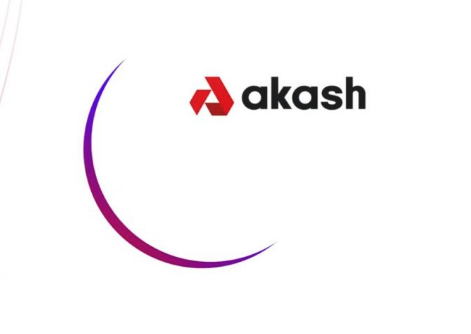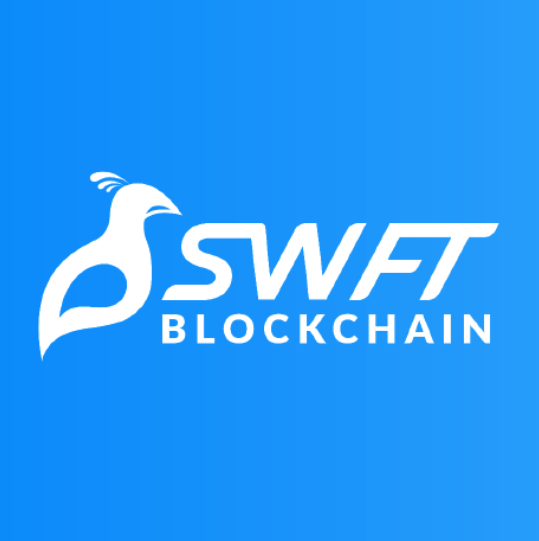
Welcome to our blog post titled “Could Ripple Reach $10000?” In this post, we will delve into the fascinating world of Ripple (XRP) and explore the possibility of its price reaching $10000. As one of the most popular cryptocurrencies in the market, Ripple has garnered significant attention from investors and traders alike. Its unique technology and potential for disruption in the financial industry have sparked debates and speculations about its future value. Join us as we examine the historical performance of Ripple, the factors that could influence its value, analyst predictions, and investor strategies for maximizing gains. By the end of this post, you will have a better understanding of whether Ripple can truly reach the coveted $10000 mark. So, let’s dive in!
Understanding Ripple and its Market Potential
Ripple, also known as XRP, is a digital currency that was created with the goal of revolutionizing the way financial transactions are conducted. Unlike traditional cryptocurrencies like Bitcoin, Ripple is not mined. Instead, it was pre-mined, meaning that all the coins were created and distributed at once.
At its core, Ripple is both a digital payment protocol and a cryptocurrency. It aims to facilitate fast, low-cost international money transfers by eliminating the need for intermediaries, such as banks. Ripple’s technology enables seamless and near-instantaneous transfers of various currencies, including both fiat currencies and other cryptocurrencies.
One of the key features that sets Ripple apart is its use of a consensus algorithm rather than a traditional blockchain. The Ripple network relies on a network of validating servers to confirm and validate transactions, allowing for faster transaction processing times compared to other cryptocurrencies. This makes Ripple an attractive option for financial institutions seeking to improve their cross-border payment systems.
Ripple’s market potential lies in its ability to address some of the limitations and inefficiencies of traditional payment systems. By offering a fast, secure, and cost-effective solution for international transactions, Ripple has gained the attention of major financial institutions and international corporations.
Furthermore, Ripple has formed strategic partnerships with various banks and financial institutions around the world. This has helped to create a network effect, where the more institutions that adopt Ripple’s technology, the more valuable the network becomes. This network effect, combined with Ripple’s innovative approach to cross-border payments, has contributed to its market potential and increased the likelihood of its widespread adoption.
In the next section, we will explore the historical performance of Ripple and analyze its growth over the years to gain a better understanding of its potential to reach $10000.
Historical Performance of Ripple
Ripple’s journey in the cryptocurrency market has been filled with ups and downs. In this section, we will explore the historical performance of Ripple, from its initial launch to its current market status. By understanding Ripple’s past performance, we can gain insights into its potential for reaching $10000.
Initial Launch and Early Years
Ripple was officially launched in 2012 by Ripple Labs Inc., a San Francisco-based technology company. Initially, Ripple aimed to provide a decentralized digital currency and a platform for secure, fast, and low-cost transactions. However, it quickly shifted its focus to becoming a technology provider for financial institutions.
In the early years, Ripple faced challenges in gaining widespread adoption. The cryptocurrency market was still in its infancy, and many investors and institutions were skeptical of digital currencies. Despite these challenges, Ripple managed to forge partnerships with several major banks and financial institutions, laying the foundation for its future growth.
Major Milestones in Ripple’s Value
Ripple experienced significant milestones throughout its journey, with its value fluctuating in response to market trends and developments. One of the notable milestones occurred in 2017 when Ripple’s value surged, driven by increased investor interest and partnerships with prominent financial institutions.
At its peak in early 2018, Ripple reached an all-time high of around $3.84. This surge in value positioned Ripple as the third-largest cryptocurrency by market capitalization, trailing only Bitcoin and Ethereum. However, like many cryptocurrencies, Ripple’s value experienced a significant decline during the market correction that followed, dropping to around $0.25 by the end of 2018.
Current Market Status
As of [current year], Ripple has established itself as one of the top cryptocurrencies in terms of market capitalization. While its value has experienced fluctuations in recent years, it has managed to maintain a relatively stable position in the market.
The current market status of Ripple is influenced by various factors, including market demand, investor sentiment, regulatory developments, and technological advancements. Understanding these factors is crucial in evaluating Ripple’s potential for reaching $10000.
In the next section, we will explore the factors that could influence Ripple’s value, including technological advancements, regulatory decisions, and market trends. By analyzing these factors, we can gain insights into Ripple’s future potential.
Factors that Could Influence Ripple’s Value
Several factors play a significant role in influencing the value of Ripple. In this section, we will explore the key factors that could impact Ripple’s value and its potential to reach $10000.
Technological Advancements
Technological advancements within the Ripple network can have a substantial impact on its value. As Ripple continues to enhance its technology and improve its scalability, security, and transaction speed, it becomes more attractive to financial institutions and investors. Any breakthroughs or innovations that enhance the efficiency and usability of the Ripple network have the potential to drive up demand and subsequently increase its value.
Regulatory Decisions
Regulatory decisions have a profound impact on the cryptocurrency market as a whole, and Ripple is no exception. As governments and regulatory bodies around the world establish guidelines and regulations for cryptocurrencies, Ripple’s value could be influenced positively or negatively depending on the outcome. Clarity and supportive regulations can instill confidence in investors and institutions, leading to increased adoption and potentially driving up the value of Ripple.
Market Trends and Sentiment
The overall market trends and sentiment surrounding cryptocurrencies can heavily impact Ripple’s value. Positive market sentiment, such as widespread adoption of cryptocurrencies or increased investor interest, can drive up demand for Ripple, resulting in an increase in its value. Conversely, negative sentiment, such as market corrections or regulatory concerns, can lead to a decrease in Ripple’s value. Monitoring market trends and sentiment is crucial in understanding Ripple’s potential for reaching $10000.
In the next section, we will explore analyst predictions and speculations regarding Ripple’s future. By examining expert opinions and potential scenarios, we can gain valuable insights into the likelihood of Ripple reaching the coveted $10000 mark.
Analyst Predictions and Speculations
Analyst predictions and speculations regarding Ripple’s future are crucial in evaluating its potential to reach $10000. In this section, we will explore expert opinions, potential scenarios, risks, and challenges associated with Ripple’s growth.
Expert Predictions for Ripple’s Future
Many experts have weighed in on Ripple’s potential for future growth. Some predict that Ripple’s value could experience significant appreciation due to its technology, strategic partnerships, and market potential. They believe that as Ripple continues to gain traction and adoption by financial institutions, its value could skyrocket. However, it is important to note that these predictions are based on assumptions and market trends, and there is no guarantee of their accuracy.
Potential Scenarios for Ripple Reaching $10000
While reaching $10000 may seem like a lofty goal for Ripple, it is not entirely out of the realm of possibility. Various scenarios could contribute to such a significant increase in value. For instance, if Ripple’s technology becomes the go-to solution for cross-border payments, experiencing widespread adoption by financial institutions, its value could surge. Additionally, increased market demand and positive investor sentiment could drive up Ripple’s value to unprecedented levels.
Risks and Challenges
Ripple’s path to reaching $10000 is not without risks and challenges. One of the primary concerns is regulatory uncertainty. Changes in regulations or unfavorable regulatory decisions could hinder Ripple’s growth and limit its potential to reach higher price levels. Additionally, competition from other cryptocurrencies and technological advancements could pose challenges to Ripple’s market dominance.
Furthermore, market volatility and investor sentiment can have a significant impact on Ripple’s value. Rapid price fluctuations and market corrections can impact the overall trajectory of Ripple’s growth, making it uncertain whether it can reach the $10000 mark.
In the next section, we will discuss investor strategies for maximizing gains in Ripple. By understanding the best practices for buying, selling, and managing risks, investors can position themselves for potential profits in the Ripple market.
Investor Strategies for Ripple
Investors seeking to maximize gains in the Ripple market should develop effective strategies that align with their investment goals and risk tolerance. In this section, we will discuss various investor strategies, including timing of buying and selling Ripple, risk management strategies, and considerations for long-term versus short-term investment.
When to Buy and Sell
Timing is crucial when it comes to buying and selling Ripple. Investors can consider several approaches:
- Dollar-cost averaging: Investors can mitigate the impact of price volatility by regularly investing a fixed amount in Ripple over a period of time, regardless of its current price. This strategy allows investors to accumulate Ripple at an average cost and potentially benefit from long-term price appreciation.
- Timing the market: Some investors may opt to analyze market trends, technical indicators, and news events to determine the best entry and exit points for Ripple. However, it is important to note that accurately timing the market can be challenging and is subject to risks.
- Long-term accumulation: Investors with a long-term perspective may choose to gradually accumulate Ripple over time, taking advantage of potential market dips and holding onto their investments for an extended period. This strategy requires patience and a belief in the long-term potential of Ripple.
Risk Management Strategies
Managing risks is crucial in any investment strategy. Some risk management strategies for investing in Ripple include:
- Diversification: Spreading investments across different cryptocurrencies and asset classes can help reduce the overall risk exposure. By diversifying, investors can mitigate potential losses if one particular asset underperforms.
- Setting stop-loss orders: Investors can set stop-loss orders to automatically sell their Ripple holdings if prices fall below a certain predetermined level. This strategy helps limit potential losses in case of unexpected market downturns.
Long-term vs Short-term Investment
Investors need to determine their investment horizon and goals when considering Ripple. Long-term investors may focus on the potential for significant price appreciation over an extended period. They may choose to hold Ripple for months or even years, believing in its long-term growth prospects. On the other hand, short-term traders may focus on taking advantage of short-term price fluctuations, seeking to make profits through active buying and selling.
In the concluding section, we will evaluate the potential for Ripple to reach $10000 based on the insights gained from analyzing its historical performance, potential influencing factors, expert predictions, and investor strategies.
Conclusion: Evaluating the Potential for Ripple to Reach $10000
In conclusion, the potential for Ripple to reach $10000 is a topic of great interest and speculation among investors and cryptocurrency enthusiasts. By examining Ripple’s historical performance, the factors that could influence its value, expert predictions, and investor strategies, we can assess its potential for reaching this milestone.
Ripple has come a long way since its inception, establishing itself as a leading cryptocurrency with a focus on revolutionizing cross-border payments. Its partnerships with major financial institutions, technological advancements, and market potential have contributed to its growth and increased its market value.
However, reaching $10000 is not without challenges. Regulatory decisions, market trends, and investor sentiment can all impact Ripple’s value. Uncertainty surrounding regulations and competition from other cryptocurrencies pose potential risks to Ripple’s growth trajectory.
Expert predictions vary, with some foreseeing significant appreciation in Ripple’s value, while others have a more cautious outlook. Potential scenarios for Ripple reaching $10000 involve widespread adoption by financial institutions, improved technology, and positive market sentiment. However, these scenarios are speculative and should be approached with caution.
Investors can employ various strategies to maximize gains in the Ripple market, such as timing their investments, managing risks, and considering their investment horizon. Each strategy has its own advantages and risks, and investors should carefully evaluate their options based on their individual goals and risk tolerance.
In conclusion, while the $10000 mark is a significant milestone, it is difficult to predict with certainty whether Ripple will reach this level. The future value of Ripple will depend on a multitude of factors, including technological advancements, regulatory developments, and market dynamics.
As with any investment, it is important to conduct thorough research, seek advice from financial professionals, and stay informed about market trends and developments. By staying informed and adopting a disciplined and strategic approach, investors can position themselves for potential success in the Ripple market.










